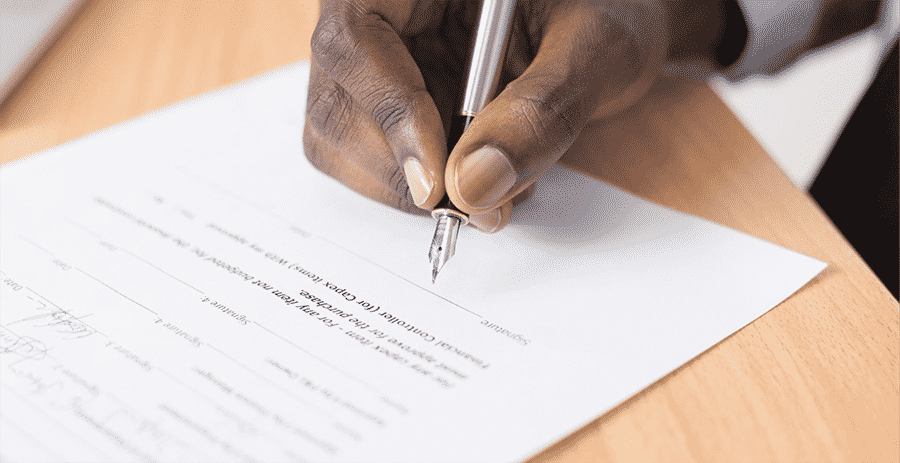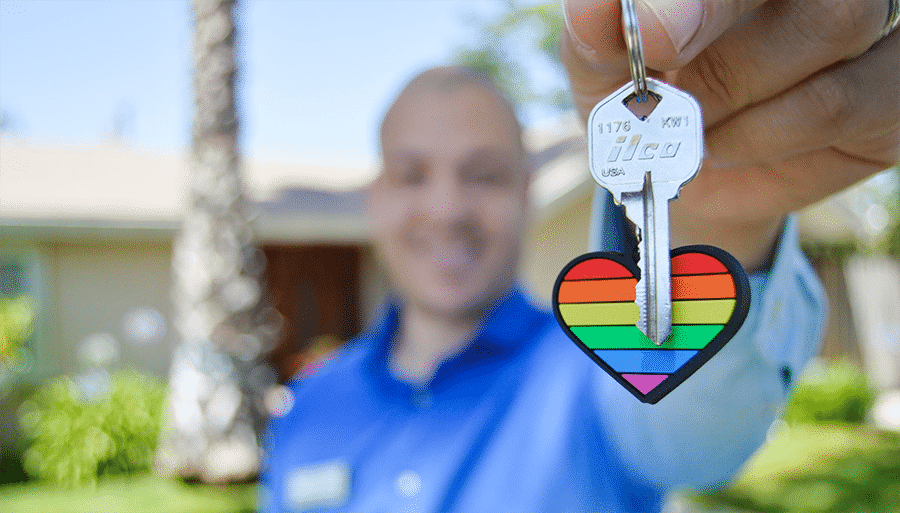Thinking about doing your first fix and flip and feeling a little nervous? Good. You should be scared! Even if you think you’ve already done your research, a quick refresher on the basics of flipping houses is always a good idea before investing large sums of money. Always remember: only fools rush in.
Over the past 27 years, I have invested in hundreds of properties. And I’ve helped just as many people with their first real estate investment. While it can seem daunting, don’t worry. I’ll walk you through my proven process for flipping houses—from doing market analysis all the way through financing, creating a budget, renovating, marketing, and selling your property. Let’s get started.
How to Flip a House: 10 Steps to Flipping Houses the Right Way
JUMP TO:
- Determine the Direction of the Market
- Find Fix & Flip Opportunities
- Evaluate Fix & Flip Properties
- Establish the Right Offer Price
- Negotiate the Price & Terms
- Find the Right Financing
- Create Your Renovation Budget
- Close on the Property
- Hire Contractors & Remodel the Property
- Market & Sell Your Fix & Flip for a Profit
Real estate investing has been a passion of mine since I was a child. I learned how to start flipping houses the old-fashioned way—through plenty of trial and error. Since then, I have spent much of my real estate career coaching real estate agents and investors and advising them how to find, buy, fix, and resell real estate the right way.
While there are many different approaches to flipping houses, I prefer the simple one. My guide, which explains how to start flipping houses, is just that—a simple approach to finding and flipping real estate. It has served me well in my career, and I hope it works for you too.
The most common question I get regarding flipping houses is “Is the market right for fix and flipping?” or “Is my market right for flipping houses?” That’s why the first step to any successful flip is determining the direction of your local market.
1. Determine the Direction of the Market

It might sound like a cliche, but the market is always right for flipping houses. Yes, really. After all, you shouldn’t be worried about where your market is right now. Instead, your primary concern should be the direction the market is going and the pace at which inventory is selling.
Seller’s Market: Home Prices Are Rising
In a seller’s market, homes are appreciating. That means the market is moving in an upward direction, and homes are selling quickly.
In this type of market, home prices are likely to be slightly higher for a property you’ve purchased, remodeled, and then marketed. This is a good thing. The wind is in your sails!
The main benefit of a seller’s market is that homes sell fast and for near or even above their asking price. The downside is that it is harder to find undervalued properties.
Buyer’s Market: Home Prices Are in Decline
On the flip side and in a buyer’s market, the repaired value of a property may end up being lower than you expect or are estimating at the time you purchase a property. It also may take longer to sell your fix-and-flip property once renovations are completed.
Buying a property knowing it might be worth less in the future scares many people. However, there are still ways to make money in a buyer’s market.
In a buyer’s market, there are considerably more motivated sellers who are open to lower-priced offers. The secret to flipping houses in a buyer’s market is to reduce your offer price to compensate for the declining prices and longer hold times.
Of course, in any market, the nicest homes sell first. As long as you are putting out great work and budgeting properly (so you don’t overprice your flips), you will always have buyers for your properties—regardless of market conditions.
How Smart Investors are Pivoting to Beat the 2023 Market
Many people are saying this market offers nothing but doom and gloom for house flippers. They recommend changing strategies to try to beat it. With a perfect storm of soaring interest rates and softening prices, I don’t blame them. But smart investors who have been in the game for decades see it differently. How are they changing their strategy to beat this market? The answer might surprise you. They’re not.
In challenging markets the best investors don’t pivot. They double down on what works: The BRRRR method – the building blocks of a successful flip in any market. So If you want to create value in your local housing market this year, check out Kiavi’s free BRRR method guide below. It includes everything you need to know for a successful flip including tips for securing the best financing and the hottest new home rehab trends for 2023.
2. Find Fix & Flip Opportunities

Flipping houses involves buying dilapidated or outdated properties, remodeling them, and selling them for a profit. Fix-and-flip investors must have the skills to find undervalued real estate opportunities, evaluate them, and manage contractors to ensure their “flips” are completed on time and within budget.
Finding properties to fix and flip isn’t as easy today as it once was. For example, the properties listed on your MLS probably won’t have margins large enough to make a hefty profit—or any profit at all.
The secret to finding fix-and-flip properties today is to identify off-market homes and homeowners who are highly motivated to sell. These may be homeowners who are in financial distress due to circumstances beyond their control, such as foreclosure, divorce, job loss, or bankruptcy.
Once identified, savvy investors approach them with an offer to take the burden of the property off their shoulders. Some of these properties are distressed, neglected, or abandoned, so an “as-is” quick closing is very attractive to the potential seller.
Finding motivated sellers isn’t easy, which is why I offer a complete course on finding motivated sellers and off-market listings at The Close Pro called Survive & Thrive With Sean Moudry.
3. Evaluate Fix & Flip Opportunities

Once you have found a good fix-and-flip opportunity, you’ll need to evaluate the property to make sure you know what you are getting into before you buy it. It’s at this juncture that many new fix and flippers cut corners and make career-ending mistakes.
To prevent that from happening to you, check out my fix and flip risk assessment process. These should help to ensure you don’t make some of the most common mistakes even experienced house flippers sometimes make.
4. Establish the Right Offer Price

“You make money when you buy the property, not when you sell it.”
In other words, the price you pay for the property will determine the profit you will make when you sell. If you overpay, chances are you won’t make any profit at all. This error is more common than you might think.
Anyone who has been investing for a long time has made the mistake of overpaying for a property. I know I have, which is why I came up with my Fix-and-Flip Risk Assessment —a tool that will force you to slow down and focus so you won’t overlook property details that may cost you big money later.
My worksheet also creates a numeric risk score to help you narrow your offer price range to avoid overpaying for a property.
5. Negotiate the Price & Terms

Once you have determined your offer price on your fix-and-flip opportunity, you will need to negotiate the price and terms with the seller. For some people, negotiations come naturally, and for others, it may take a little practice.
19 Clever Real Estate Negotiation Strategies From the Pros
I have found that the best way to negotiate the best price for fix and flips is to meet with the seller face to face and share your concerns about the property openly and honestly. Explain how much work it will take to get their property “resell ready” and emphasize that your profit is not guaranteed.
Next, remind them why your offer is the best one. Accepting your as-is offer that closes quickly will help the seller move on with their lives painlessly.
Lastly, bring the completed contract with you. I can’t tell you how many times I have come to verbal terms with a seller, only to have them get cold feet a few hours later. As soon as they agree to the terms, make the adjustments to your contract and ask them to sign the contract immediately to secure your deal.
6. Find the Right Financing

Fix-and-flip financing is different from other types of real estate financing. When you’re financing a home to live in, the lender puts most of the qualifications on the borrower’s ability to pay the mortgage back over 30 years.
We use “hard money” lending when flipping houses—which means short-term loans generally paid back within six to 12 months. This quick turnaround time means that hard money lenders will take a closer look at the property than at the borrower’s finances.
With the higher risk involved for the lender, they’ll charge higher upfront fees and interest rates. For a complete breakdown of how to choose a hard money lender and my top picks for fix-and-flip lenders, read my hard money lenders guide.
Cash Is King & Queen When Flipping Houses
Before you even consider making an offer on a potential fix-and-flip opportunity, you need to ensure that you (as the buyer) or your client has access to enough cash to close the deal. If you don’t have cash, Kiavi is a good option. They offer competitive rates, fund quickly, and work with brand-new investors, which not all hard money lenders do.
7. Create Your Renovation Budget

It may sound counter-intuitive to create your budget after you’ve made an offer, but the truth is, you often won’t have time or access to the property to complete an accurate budget beforehand.
Keep in mind that you haven’t closed on the property yet, and there is still time to back out of the deal, though you’ll risk losing your earnest money. You can also try to renegotiate if you find that your initial estimates fall short of the actual rehab budget.
Many project management software providers offer outstanding estimating software. However, I have found a simple spreadsheet like this one to suffice for most light remodel flippers.
Just remember “garbage in … garbage out,” meaning if your initial estimates are wrong, the spreadsheet will also be incorrect. If you are brand-new to remodeling and flipping houses, I highly recommend using a professional contractor to help you develop estimates for the work that needs to be completed.
8. Close on the Property

The big day has come, but don’t get too excited. Before you go into the closing and sign your name to your first flip, take a minute to review all the information you’ve gathered so far from each of the steps outlined here.
Did you investigate everything thoroughly? Did you get all your estimates back? Which issues, to the best of your knowledge, may come back and bite you later? This moment is your last opportunity to take a pause or walk away completely. Don’t take this step lightly.
Once you feel confident that you have your questions answered and the issues you are aware of can be managed if and when they arise, walk into the office and confidently sign the paperwork to buy your first flip.
9. Hire Contractors & Remodel the Property

Now the real work begins! It’s time to remodel the house.
One of the biggest mistakes new fix and flippers make is to try to do all the work themselves. Even if you are a professional contractor and planning on this course of action, you will still want (and possibly need) to secure quotes from other contractors. Lenders will require bids from several contractors.
It’s unlikely that you’ll be able to pay yourself for remodeling the property until after it sells, so you’ll need income from another job. But working on your flip in the evenings and on weekends isn’t going to cut it. You’ll need to get the home remodeling finished quickly.
One rule of thumb is to be in and out in less than five weeks—meaning from the day of closing to the day you put the home back on the market. Here’s why timing is so important: The longer you hold a property, the larger your finance costs.
The other reason is that time is money. If I spend a large chunk of my week renovating this property, I am potentially missing out on other fix-and-flip opportunities. Some of those opportunities will offer better margins, and as a result, will be snapped up quickly.
So get multiple written bids from contractors and plan on using them to finish the project faster and keep you focused on finding the next project. Trust me, the money spent on contractors will offer you the best return on investment (ROI) over the long run.
10. Market & Sell Your Fix & Flip for a Profit

Another common misstep fix and flippers make is cutting corners on marketing the home once it is completed. I know that after weeks of hard work, you’re probably excited to get your masterpiece on the market. But you can’t cut corners here. Any realtor worth their salt will tell you: Marketing and selling homes is hard work.
Before placing the for sale sign in the yard, you need to complete the full punch list and professionally clean the house. Selling a home is about getting a buyer excited about living in the home. If they see unfinished details, construction debris, or dusty and dirty windows, they’ll think you have cut corners in areas they cannot see.
Next, you will want to stage the property. It is a well-known fact that staged properties sell faster and for more money than vacant properties. A professional staging company charges between $1,000 and $4,000 to stage an empty home. If you don’t have room in your budget for staging, consider virtual staging.
The 6 Best Virtual Staging Software & Virtual Staging Guide in 2025
Finally, if you’re not a licensed real estate agent, hire one. Many fix and flippers have their real estate agent license so that they don’t have to pay a commission each time they sell a home.
Hire an experienced agent who knows how to market your fix and flip and drive buyers to your door—and in some cases, multiple offers too. They’re worth their weight in gold. Having another real estate pro who can handle your sale for you will give you time to focus on your next fix-and-flip opportunity—without worrying about managing the details of a real estate transaction.
Bottom Line
Like Mike Tyson said, “Everyone has a plan until they get punched in the mouth.” Mike was right, and his advice applies to flipping houses. No plan is perfect, but I’m sure he would agree that some planning is far better than no planning at all.
So, before you get too excited and jump into your first fix and flip, take some time to review these steps and my fix and flip risk assessment process and worksheet. Otherwise, you are sure to get punched in the face by an otherwise avoidable mistake.








Add comment